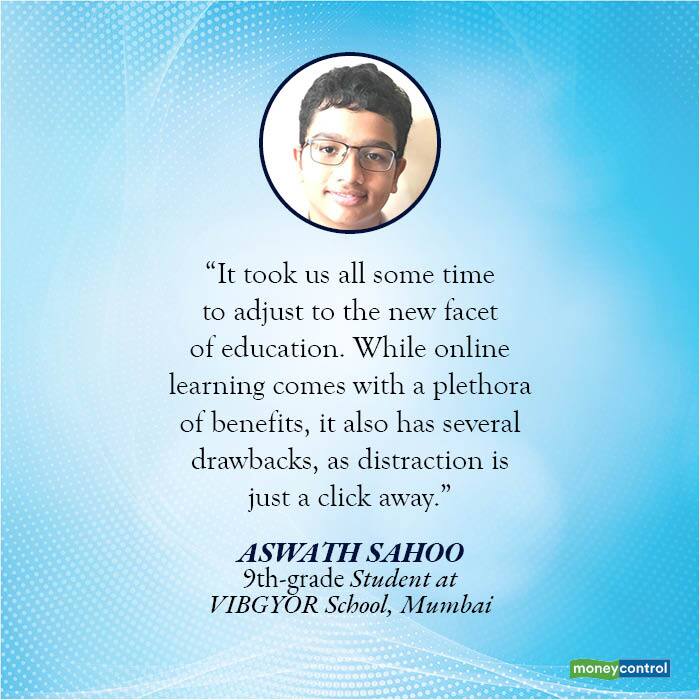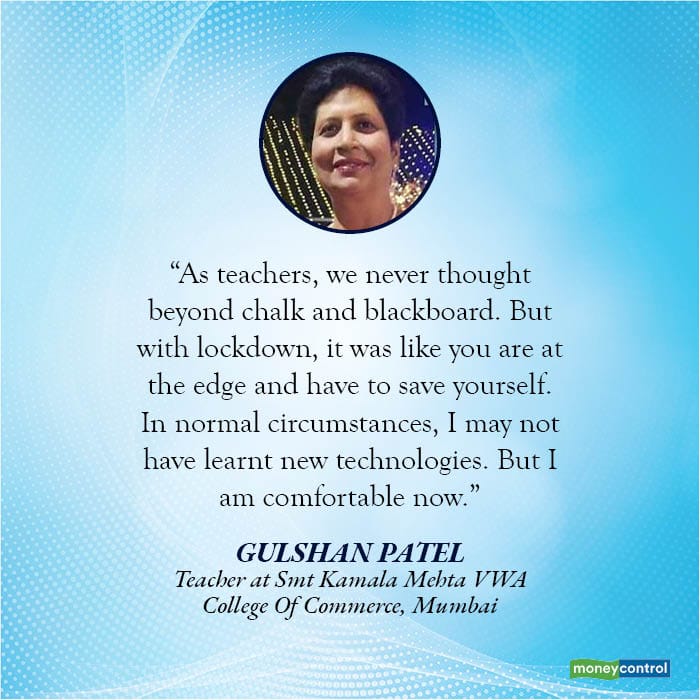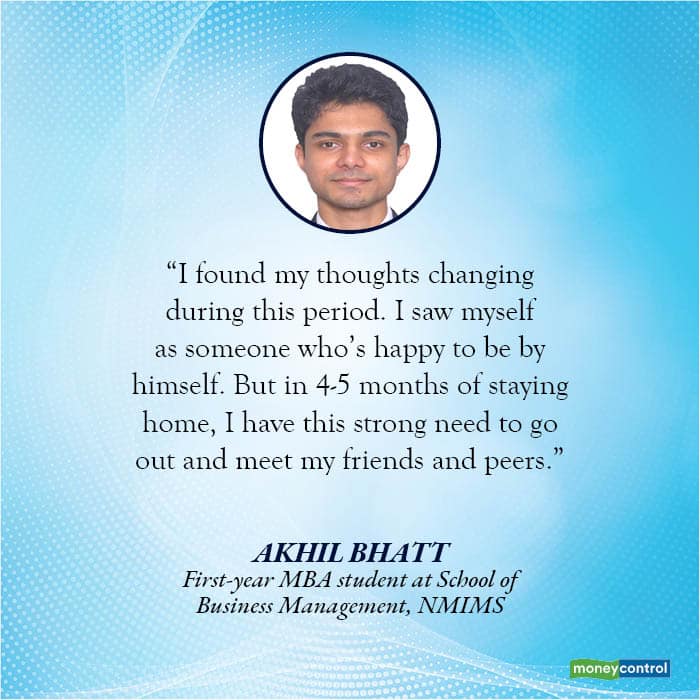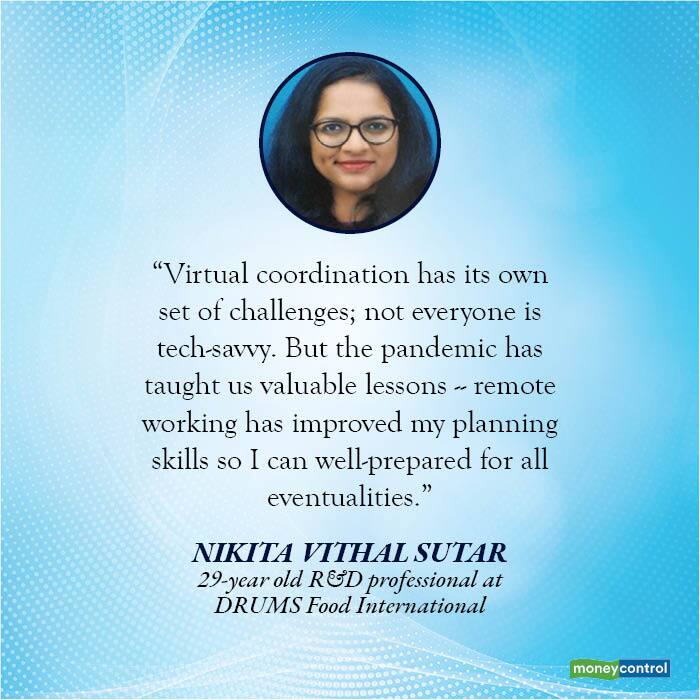



The coronavirus outbreak and the subsequent lockdown led to offices, schools, and colleges going virtual from April 2020 onwards across India.
Students, teachers and working professionals were required to go digital to ensure continuity in their daily activities be it for education or in a job. Despite initial glitches, Indians from across age groups seem to have adjusted well to the ‘new normal’.
Here are the accounts of four individuals and how the virtual world of studying, teaching, and working panned out for them.
One year ago, it would have been unimaginable that I would not venture out of my home for months on end and that my home would be like a gilded cage. It is ironic that just a year ago, most people would have been delighted at the prospect of a long-drawn vacation.
During the initial outbreak of COVID-19, I was sceptical about school assuming a new dimension, of online education. I was hesitant, but I sat down for my first online class with an open mind. It was much like the first day of school: students familiarised themselves with new surroundings, met old friends, and tried to make a good impression on the teacher. I was very impressed. I had expected pandemonium, but instead was greeted by a perfectly organised lesson that went off without any major issues.
Lessons then resumed as usual. It was as if we were back in the classroom. It took all of us some time to adjust to this new facet of education. But while online learning came with a plethora of benefits, it had several drawbacks.
For instance, on online platforms, distraction is only ever a click away. All it takes is the push of one button to switch screens and browse the internet. Further, being rooted to the same spot, in the same surroundings, often becomes monotonous. This is a far cry from the usually vibrant environment of the school, where dull moments are few and far between.
On a brighter note, the term exams went off without a hitch, and submitting the answers was no burden at all. This was in stark contrast to my presumption that the tests would be a tedious and time-consuming process.
As for extracurricular activities, the various Olympiads and external exams also underwent a change and transformed completely into an online form. Not to mention the initiatives of the school, including virtual field trips. However, the same cannot be said of events like the Sports Day and interschool tournaments, which could not be reproduced in an electronic medium.
I shall look back on this year and remember it as a year of surprise, a year of distress, and a year of unconventional methods.

I teach Accounts (Accountancy), and this subject requires me to use the blackboard a lot. When the lockdown was announced and classes went virtual, I wasn’t technology savvy to teach online. But my daughter helped me set up the online classes and use video tools. It took 15-18 days to get the system set up and understand how it works.
I was very jittery initially. As teachers, we never thought beyond the chalk, blackboard, and duster. But with the lockdown, it was like you are at the edge and have to save yourself. In normal circumstances maybe I wouldn’t have learnt these new technologies. But now I am very comfortable with it. I use a graphic board that is connected to the laptop and open Microsoft Whiteboard (a collaboration tool). So, as soon as I use this graphic pad, the students are able to view the lessons virtually. It is exactly as I would teach in a physical classroom scenario. After downloading the textbook, daily lessons can be viewed.
But like in a regular classroom, some students need to be nudged to be more responsive and attentive in the classroom. I did experience some students trying to disturb the lecture but later counselled them against doing so. In a physical classroom, one can immediately catch a student if he/she is not paying attention. In a virtual class, I stop at regular intervals and switch to view the students' screen to see what he/she is up to.
Some students from economically disadvantaged backgrounds have connectivity issues since they use mobile phones. So I tell them to contact me separately post-class if they missed out on any lesson or have additional queries.
As a teacher, I believe in the carrot-and-stick approach. Disciplining students if they are not attentive but also allowing them to interact freely on regular occasions. Accounts is a subject that cannot be learnt using rote learning techniques. So, as a teacher, my first responsibility is to ensure that my students are attentive and 100 percent involved in the classroom, be it virtual or physical.

I joined the course this year after the COVID-19 lockdown was imposed. I had very little knowledge of online study formats or what an MBA class could entail since I joined my course only this year. My classes started on August 4, and it was straight away with this novel experience of virtual classes.
The biggest difference was that I was studying from the comfort of my own home. There was a lot of flexibility. I could wake up just five minutes before my lecture. I also found that our teachers were more accessible. Our professors told us that we could reach out to them at any point in time. It was as easy as setting up a short Zoom meeting whenever they were available. This will probably not be as easy in an offline scenario, where professors may have other demands on their time.
They also helped us out with reading materials. Our teachers ensured that we had an e-book or a presentation before we started a session or class. Our college is also providing counselling for students who may feel stressed or feel overwhelmed.
But there are challenges as well. Since we did not know each other, group projects took longer to start. Normally, we would have met and gotten to know each other. There were also accessibility issues when some were unable to connect properly. Later we came up with a more efficient method where we had short meetings to assign tasks to different members of the group and then compile the parts.
Now, we have also started to socialise online. At night we play online games with whoever is free and connect over calls. There are clubs and committees where we network with a wider set of peers. Personally, I found my thoughts changing during this period. I was driven towards introversion and saw myself as someone who’s happy to be by himself.
But in these last 4-5 months of staying at home, I have this strong need to go out and meet my friends and peers. If given the opportunity and when it’s safe to do so, I would love to finally go to campus and get a real MBA experience.

My work involves constant interaction with teams across the country so I was never used to working from home (WFH). But the Coronavirus outbreak and subsequent lockdown forced us all to work remotely.
In my job, physical presence is very crucial since I am part of the research and development (R&D) team at my company, which is part of the food industry. The initial two to three months were difficult and I was majorly involved in researching new products and also collecting data, all from home. Coordination with factory units was also happening virtually. Since visiting factories was not feasible, my team would be sent new product samples from the factories for tasting and evaluation at home.
Virtual coordination had its own set of challenges because not everyone at the shop-floor level is technology-savvy. There would be someone coordinating between me and the shop-floor workers at factories.
Simultaneously, we were focussed on our personal lives, be it staying fit or being part of charitable initiatives. I was involved in social activities and was involved in raising funds for daily-wage-earners with my friends. We raised Rs 2.5 lakh for close to 1,000 plus people.
Keeping myself busy outside work also ensured that my mind was engaged. From June, I started gradually going to office and now usually go about twice a week. The office has provided transport so it is convenient. We had stringent safety norms at the workplace even before COVID-19 since it is the food industry. But now there are additional measures — sanitised workstations/computers and disinfected aprons etc. The canteen follows staggered timings to avoid crowding.
The company has taken adequate care to minimise infection and we are also taking precautions individually. But then, at the back of my mind, there is always a fear of me being a potential risk when I come back home from outside. This is because I have elderly parents at home.
Face-to-face interactions for work purposes are way better in job roles like mine. I am engaged in multiple conference calls with factories across India on a daily basis. But the pandemic has taught us valuable lessons. For example, there are delays in sourcing ingredients, which can sometimes throw you off guard. But we are now learning and taking into account the possibility of delays.
Remote working has also has improved my planning skills so I am well prepared for all eventualities.
Discover the latest Business News, Sensex, and Nifty updates. Obtain Personal Finance insights, tax queries, and expert opinions on Moneycontrol or download the Moneycontrol App to stay updated!
Find the best of Al News in one place, specially curated for you every weekend.
Stay on top of the latest tech trends and biggest startup news.